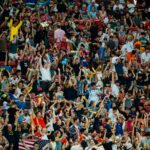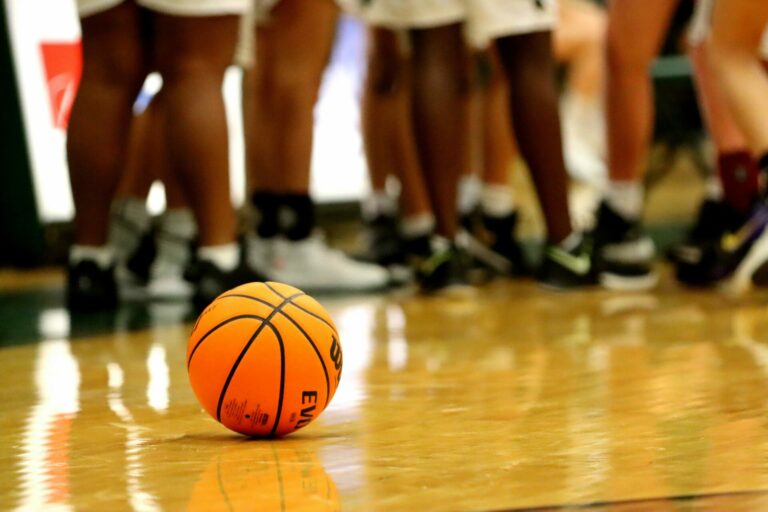Kirk Gibson's Mental Skills Training
- “How vividly you can imagine something determines how real it becomes.”
- Little adjustments here and there can lead to greater, positive growth.
- Channel your energy into pursuing your ideal future; MAKE it happen.
Kirk Gibson is a bona fide sports legend.
After an All-American football career at Michigan State University, Gibson played 16 seasons of professional baseball and added 11 more as a coach and manager. He is best known for hitting two of the most important home runs in World Series history—one in 1984 for the Detroit Tigers, and the other in 1988 for the Los Angeles Dodgers.
However, Gibson’s legendary career didn’t start so smoothly.
As a young player, Gibson was notorious for his bad attitude. He was terse with reporters and dismissive toward fans. On the field, he struggled to consistently perform. In order to turn his career around, Gibson knew he needed to make a change. Using cutting edge mental conditioning techniques like visualization, (learned from mental skills pioneer, coach Frank Bartenetti), Gibson was able to master his fierce competitive drive and channel it for good.
After retiring from coaching, Gibson began a career in baseball broadcasting that was cut short in 2015 when he was faced with his toughest challenge yet—getting diagnosed with Parkinson’s disease. But thanks to his mental skills training, Gibson knew he had the tools to rewrite the narrative of any situation, no matter how dire.
In a lifetime of improbable events, this is how Kirk Gibson has continually achieved the impossible.
A rough start in Detroit
Kirk Gibson heard the sharp crack of the bat. From his position in right field, he saw the ball sailing toward him and positioned himself to make the catch. It was a gorgeous day at Detroit’s Tiger Stadium, and the bright sun blinded him just in time for him to lose track of the ball—which glanced off of his glove and came crashing to the ground.
Gibson grumbled to himself as the boos and jeers of the home crowd reverberated through Tiger Stadium.
It might have been a beautiful opening day to the 1981 baseball season, but it also marked a dismal beginning to the 24-year-old Gibson’s first season as a starter in Detroit. A local kid from Southeastern Michigan, Gibson was a talented two-sport athlete at Michigan State (even earning All-American honors in football), before being selected in the first round of the 1978 MLB draft by the Tigers. Many saw his imposing stature and elite physical tools as reminiscent of the Yankees legend, Mickey Mantle, and rode Gibson in on proclamations that he would become another baseball great.
The start to Gibson’s career, however, was anything but great. In fact, over the course of his first three seasons starting for the Tigers, his play continuously deteriorated.
By the end of the 1983 season, Gibson was batting a dismal .227. He was about as disenchanted with baseball as anyone could be—and it wasn’t a secret. He was known for dismissing fans and acting out both on and off the field. He hated to lose more than he loved to win, and his errors in right field and poor performance at the plate weren’t helping matters much.
Gibson knew that something had to give.
“I thought I was going north, but I looked at my compass, and I was going straight south,” he recalls.
So, Gibson enlisted the help of former Tigers right fielder—and Baseball Hall of Famer—Al Kaline. Kaline helped Gibson select the right kind of sunglasses to wear in the field, showed him proper footwork, and taught him how to use his glove to shade his eyes from the sun on those bright Tiger Stadium days.
Gibson’s game began to improve. Now, those towering fly balls didn’t disappear into the sun nearly as easily. And as his confidence in the field improved, so did his hitting. However, his ”rough-around-the-edges” tendencies still alienated many fans.
Requests for autographs were more often than not bluntly refused, and reporters were warned to stay clear or be faced with contentious remarks.
“There was more to be done,” Gibson remembers. “I needed to choose to make a change in my attitude.”
Mastering the mental game
When Gibson heard about the Pacific Institute, a mental skills training clinic in Seattle that offered a haven, “dedicated to human fulfillment,” he knew what he needed to do. This was a place where individuals could go to realign their mindset and reignite their passion.
Gibson booked his flight and when he arrived in Seattle, he met with renowned mental skills coach Frank Bartenetti. Through intensive mental skills training, Bartenetti helped Gibson overcome the jitters and yips that plagued his performance—and the bad attitude that isolated him from others.
To help create lasting change, Bartenetti taught Gibson what he calls, “a few little tricks,” that he could use to reset whenever his attitude got the best of him.
“Little tricks to your craft make you much more powerful in a positive way,” Gibson notes.
One of the most impactful tricks Gibson learned was visualization.
Visualization, also referred to as imagery, is a mental skills technique where an individual uses every sense they have to visualize, as vividly as possible, a desired outcome. This strategy allows someone to mentally train for the big moment so when that moment arrives, they’re more prepared because they feel like they’ve been there before.
Bartenetti asked Gibson to imagine each aspect of the game he wanted to improve. “So, you dream about making that great catch,” Bartenetti would say. “What’s the most important part of making that catch? Is it the memory of the catch itself? No, it’s how you felt.”
Meaning that, if Gibson wanted to improve his ability to catch fly balls, he had to imagine every aspect of that moment. He had to hear the cheering of the crowd, smell the outfield grass, see the ball perfectly off the bat, and—most importantly—feel the satisfying sensation of the ball dropping neatly into the pocket of his glove. Then he had to do this over, and over, and over again, all before he even had the chance to step on the field.
Gibson found that practicing imagery in this way offered a powerful alternative to the crippling fear and anxiety that would often paralyze him when he was on the field.
“I love playing right field, on a sunny April day in Tiger Stadium,” Gibson would say to himself as he imagined the moment. “The sun is warm on that white Tiger uniform. The backdrop of the crowd is so vibrant, so colorful. I’m no longer scared.”
This little mental skills trick of imagery offered Gibson a useful strategy for helping rewrite the narrative of any negative situation.
“Sometimes, when we talk about being our own expert, we have to change the picture. I had a bad sun-ball picture,” Gibson remembers. “I had to change that picture.”
This little mental skills trick of imagery extended to his hitting, as well.
“Bases loaded, two outs, what do I do?” Gibson would think. “Do I tell myself, ‘I stink, I suck?’ Do I let my teammates down? Or do I say, ‘that’s not like me, I usually perform better in those situations.’
And that’s how Kirk Gibson started visualizing hitting game-winning home runs. It didn’t take long for those visions to come true.
“The impossible has happened!”
As Kirk Gibson retrained his brain through mental skills training, he saw performance improvement on the field, too.
The 1984 season brought Gibson personal bests in just about every offensive category, and showed Tigers fans just how dynamic the kid from Waterford, Michigan could be.
While Gibson’s competitive edge always remained, he was having an easier time separating his on-field attitude from his off-field attitude. Gibson’s teammates noticed a change, and the media and fans began to see it too.
Playing right field and batting third, Gibson led Detroit to the 1984 World Series against the San Diego Padres, where the stage was set for his first career-defining moment.
It was the bottom of the 8th inning in Game 5, with the Tigers holding a narrow 5-4 advantage. They led the series 3 games to 1, and were looking to close out the series at home and earn Detroit its first championship since 1968.
Gibson was up to bat, and with runners on second and third, it seemed like the Padres would try to intentionally walk him. However, future Hall of Fame pitcher Goose Gossage convinced Padres manager Dick Williams to let him pitch to the Tigers’ star, believing he could get the strikeout, having infamously declared, “I own him,” earlier in the World Series (in fact, in Gibson’s inaugural Major League at-bat in 1979, Goosage had struck Gibson out in three pitches).
Detroit’s Hall of Fame manager Sparky Anderson got the message. “He don’t wanna walk you!” Anderson screamed at Gibson, gesturing for his number three hitter to swing away.
Swing away he did, and the result was one of the most iconic home runs in World Series history—a moonshot into the right field upper deck of Tiger Stadium to give Detroit a 8-4 lead, icing the series for the home team.
Fast forward to 1988.
Gibson was now playing for the Los Angeles Dodgers, and once again, he had led his team to the World Series. However, after being far and away the best hitter for the Dodgers all season, Gibson had injured both legs in the National League Championship Series. With Gibson struggling even to walk, let alone swing a bat, Dodgers Manager Tommy Lasorda made the difficult decision to rest his star right-fielder for Game 1.
Gibson watched the game play out on the clubhouse TV, while undergoing physical therapy. But with the Dodgers trailing late in the game, Gibson’s famous competitive edge kicked in. Though he couldn’t run, he called upon Lasorda to let him know that he was available to pinch hit.
Many of you probably know what happened next, or even had the pleasure of watching it on TV and hearing legendary play-by-play announcer Vin Scully’s iconic call.
It was the bottom of the ninth inning and the Dodgers were down to their final out, trailing the Oakland Athletics 4-3. With the tying run on first base, Gibson hobbled to the plate.
“And look who’s coming up!” remarked Scully, as the astonished crowd cheered.
It’s hard to picture a more pressure-packed moment than the one Gibson was about to face. But he recalled his mental skills training from years prior, and visualized what he had imagined so many times before.
“I’d been working in my head the whole time to feel what it’s going to feel like to run around the bases in the World Series,” Gibson recalls. “So I did that.”
Oakland’s closer, Dennis Eckersley—one of the game’s best relief pitchers and, like Goose Gossage, a future Hall of Famer—stood on the mound. Gibson quickly fouled off of the first two pitches, grimacing with every swing.
The pain coursing through his body was obvious to everyone watching, and the injured Gibson appeared to be totally outmatched. But after dribbling a ball foul meekly down the first base line, Gibson battled back in the count, taking a pitch away, fouling off another pitch, and taking another outside ball to make it 2-2.
Baserunner Mike Davis stole second on the seventh pitch of the at bat, another ball, which brought the count full at 3-2. The fate of the game now rested on Gibson.
Eckersley wound and delivered. Despite his success with the fastball, the Oakland closer decided to throw a backdoor slider.
The pitch hung over the plate.
Gibson swung with the entire force of his body, drawing every ounce of strength from his injured legs. The world watched in awe as Gibson’s bat connected, sending the ball over the fence and into an ecstatic sea of blue in the right field stands.
Bartenetti asked Gibson to imagine each aspect of the game he wanted to improve. “So, you dream about making that great catch,” Bartenetti would say. “What’s the most important part of making that catch? Is it the memory of the catch itself? No, it’s how you felt.”
Meaning that, if Gibson wanted to improve his ability to catch fly balls, he had to imagine every aspect of that moment. He had to hear the cheering of the crowd, smell the outfield grass, see the ball perfectly off the bat, and—most importantly—feel the satisfying sensation of the ball dropping neatly into the pocket of his glove. Then he had to do this over, and over, and over again, all before he even had the chance to step on the field.
Gibson found that practicing imagery in this way offered a powerful alternative to the crippling fear and anxiety that would often paralyze him when he was on the field.
“I love playing right field, on a sunny April day in Tiger Stadium,” Gibson would say to himself as he imagined the moment. “The sun is warm on that white Tiger uniform. The backdrop of the crowd is so vibrant, so colorful. I’m no longer scared.”
This little mental skills trick of imagery offered Gibson a useful strategy for helping rewrite the narrative of any negative situation.
“In a year that has been so improbable… the impossible has happened!” howled Scully. The crowd went nuts. Gibson limped around the bases, pumping his fist twice in celebration, before his entire team mobbed him at home plate.
The Dodgers had just won Game 1 of the World Series, 5-4.
“An average player who did some great things.”
After their triumphant victory in Game 1, the Dodgers went on to win the 1988 World Series in 5 games. Kirk Gibson’s clutch home run—much like the one he hit for his hometown Tigers in 1984—would be remembered fondly by sports fans for years to come.
But what makes Gibson’s story truly inspirational is not the World Series victories at the end of it all, but the transformation Gibson had to undergo to make his vision a reality.
Many of today’s greatest performers swear by the same mental skills Gibson learned at the Pacific Institute. Visualization, for example, allows athletes to gain that extra competitive edge by training their minds as rigorously as they train their technique and tactical ability on the field.
“When you want to create moments or you want to make changes, you need to do three things,” advises Gibson. “You have to set your goal. You have to write affirmations as if it’s already happened. And you’ve got to have a vividness to it.”
That’s why in 2015 when Gibson was faced with his greatest challenge yet—getting diagnosed with Parkinson’s disease—his attitude never wavered.
“Imagery multiplied by vividness equals reality,” Gibson says. “How vividly you can imagine something determines how real it becomes.”
With decades of experience writing affirmations and practicing visualization, Gibson knew he had the power to change the picture of any seemingly negative situation he faced—even life with Parkinson’s.
He recognized the benchmarks the disease wanted to set for him, and instead he imagined new benchmarks for himself. Then he put in the physical and mental work required to achieve them.
The relentless competitor that he is, Gibson has always had the drive required to surpass expectations—just as he’d done countless times before on the baseball field. Which is why he now channels his energy into the Kirk Gibson Foundation for Parkinson’s, to “promote collaboration, cooperation, and teamwork for all of those affected by Parkinson’s disease.”
The impact of the Kirk Gibson Foundation for Parkinson’s has already been felt; in 2019, its, “Everybody vs. Parkinson’s” gala raised $1.5 million to combat the disease.
In 1983, Kirk Gibson decided to change his story. So, he dedicated himself to mental skills training to help him navigate enormous challenges both on and off the field.
With a lifetime of achievements under his belt, today Gibson exudes a quiet humility that his rookie self would never have imagined.
“I was an average player who did some great things,” he reflects. “And it’s because that’s who I saw myself as being.”
From Gibson’s larger-than-life World Series exploits to his tireless work as an advocate for people affected by Parkinson’s, those great things transcend sports.
That’s a story that can never be written.
Share this article with your network on social media to not only start the conversation about how mental skills training can help students, but also to bring awareness to Gibson’s foundation.
Kirk Gibson resides in Eastern Michigan with his family. Retired from coaching and broadcasting, Gibson has turned his focus to a greater goal: spreading awareness about Parksinon’s and inspiring those affected by the disease.
Head here to get involved with the Kirk Gibson foundation.
Click here to donate to the Kirk Gibson Foundation for Parkinson’s.











